Находясь на данном сайте, вы даете согласие на использование файлов cookie и других технологий для обработки персональных данных.
Подробнее вы можете ознакомиться на странице
политика обработки персональных данных
12 летний Абхиманью Мишра самый молодой гроссмейстер
12 летний Абхиманью Мишра стал самым молодым гроссмейстером в истории шахмат.
Гельфанд снова первый на фестивале в Леоне
Израильский гроссмейстер второй раз победил на фестивале в испанском Леоне.
Аронян выиграл Goldmoney Asian Rapid
В последний игровой день, Левон Аронян довольно быстро выиграл финал Goldmoney Asian Rapid. Потребовались всего две ...
В финале турнира GoldMoney сразятся Аронян и Артемьев
Армянский гроссмейстер Левон Аронян и россиянин Владислав Арьтемьев встретятся в финале турнира GoldMoney
Каспаров справляет день рождения, пресс-конференция Дворковича
День рождения Каспарова, интервью Дворковича, «Uide Bol Cup» 2020.
В предпоследнюю неделю уходящего года в Москве проходил очередной турнир поколений «Щелкунчик».
Приближается чемпионат в Саудовской Аравии
С 26 по 30 декабря в столице Саудовской Аравии Эр-Рияде пройдет чемпионат мира по рапиду и блицу.
Уже ставший знаменитым турнир пройдет в российской столице с 19 февраля (день приезда) по 2 марта (день отъезда).
Кубок мира стартует в Тбилиси.
128 гроссмейстеров разыграют две путевки в турнир претендентов.
Lesson 3
Lesson 3. How to move pieces? Pawn, knight.
So, the most interesting things start now– it is necessary to determine how you may move chess pieces.
In this Lesson we will see first two pieces: pawn and knight.
Pawn

Pawns can be moved only straight forward. This is the only piece that is not able to move and capture back or horizontally. When pawn is in its initial setup (2nd rank for white and 7th for black) its first move can be made one or two squares straight forward at the discretion of player.
After first move pawn can move only one square straight forward per move. Pawn can capture opponent's pieces one square forward diagonally right and left
Thus, pawn can go straight forward and capture one square diagonally. This is the only piece in chess that moves by one rule, and captures by the other one. Trace of movement and capture is matching for the rest other pieces. Below there are two positions. In setup "A" white pawn has four kinds of moves: it can move one or two squares straight forward and can also capture one of the black pieces. In setup "B" pawn has no any possible move – there is opponent‘s pawn ahead and no pieces to be captured
| A | B |
 |
 |
One of the most interesting chess rules is connected to pawn, that is rule of transformation. It is described as following. If any pawn reaches last rank (8th rank for white pawns and 1st rank for black one), it is converted into any other piece (except the king). Clearly it is shown in positions below.
 |
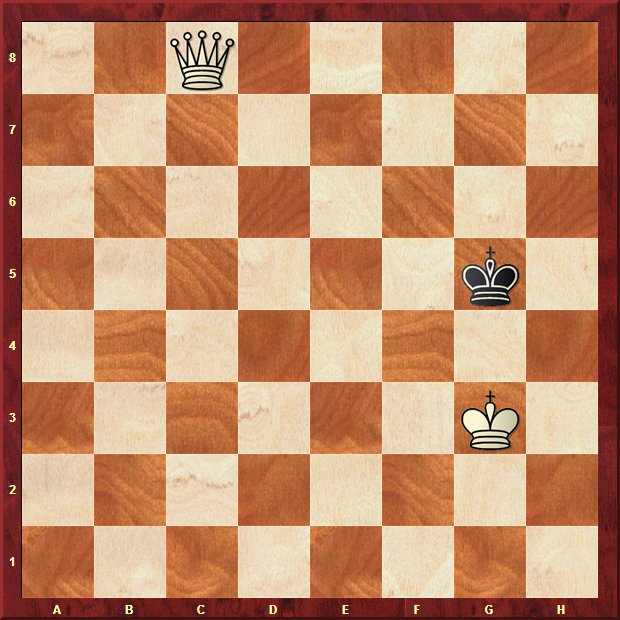 |
| Before the move | After the move |
Pawn in its last move, moved to the last rank and converted into the queen. It is important to understand that this transformation makes one move only. That means, after this transformation, turn passes to opponent.
Another rule associated to pawn is capture en passant – it is essentially the most complicated one so it is explained separately in Lesson 7.
Knight

Knight is the most "frivolous" piece on the chessboard. It moves in unusual trajectory compared to the other pieces and it is the only piece that can jump over other pieces. Nominal value of the knight is 3 points.
"Make the knight's move" in real life, as we know, is to make any unusual or especially tricky action. Knight makes L-shaped move. The trajectory of his move is shown on the diagram below:
That means knight moves 2 squares straight forward and one square aside, shaping letter "L". In that way knight can move and capture in any direction. Placed in the center of the board, it has eight possible moves, and if it is placed just in the corner there are only two ways of move.
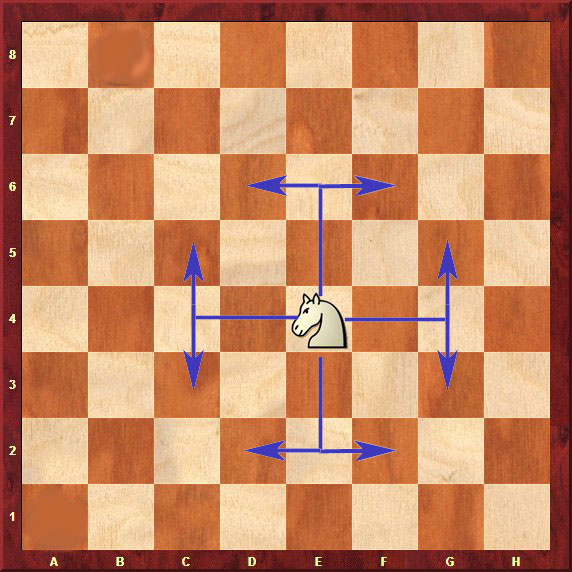 |
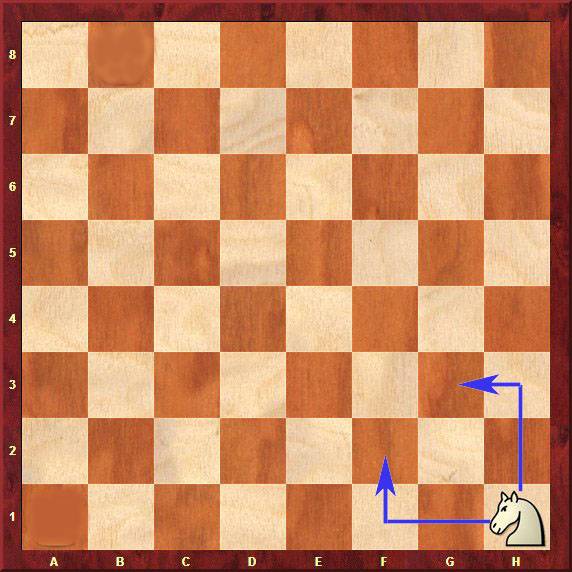 |
In general that is all can be said about pawns and knights.
Below there are two small tasks for you to remember the principles of pawns and knight moves. If you read the Lesson completely no problems should arise.
 |
 |
| How many moves shall white knight do to capture black pawn? | Black knight attacked white pawn. How can it be protected? |
How to move bishop and rook we will display in the next lesson.
All lessons:
1. Conversance to chess game. Chessboard.
2. Chess pieces. Placement of pieces on the board.
3. How to move pieces? Pawn, knight.
4. How to move pieces? Bishop, rook.
5. How to move pieces? Queen, king.
6. Comparative strength of pieces and goal of the game
7. Castling, EN passant,
8. Checkmate. Result of the game.
9. Draw in chess.
10. Recording chess game
11. Importance of practical training










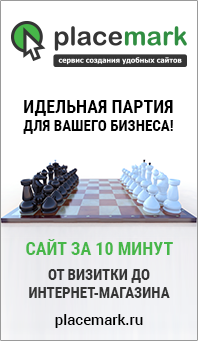
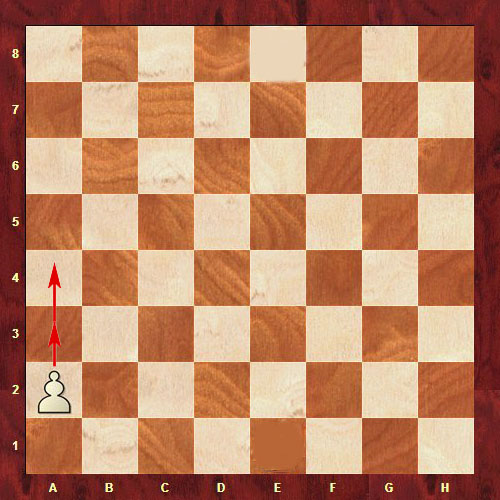

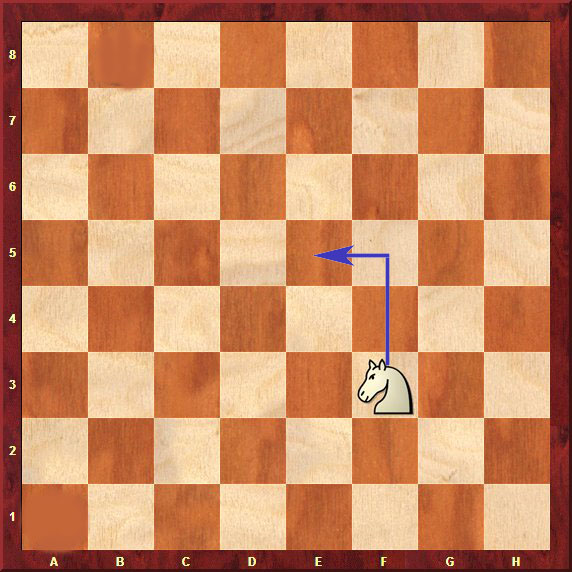
Оставить комментарий